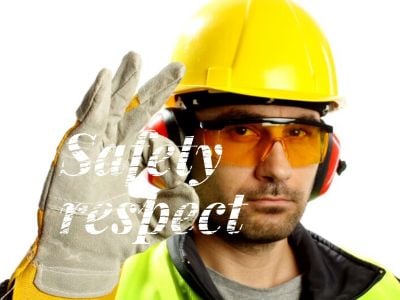6 Ways To Become A Respected Safety Leader
As a safety leader, more doors open, more options are available and the longer you are likely to live.
 My Blog post, Safety Cop Or Safety Leader got a lot of traffic and created much discussion. Some safety people found themselves inadvertently standing on the wrong side of the conversation. But, as Dr. Phil says, you can’t fix what you don’t acknowledge.
My Blog post, Safety Cop Or Safety Leader got a lot of traffic and created much discussion. Some safety people found themselves inadvertently standing on the wrong side of the conversation. But, as Dr. Phil says, you can’t fix what you don’t acknowledge.
To become a safety leader, you have to first understand what safety leadership is not: it is not safety management. Since there is no requirement to be in management to be a leader, then it only makes sense that you don’t have to be in safety management to be a safety leader.
Safety leadership is not just for those with a title. Safety leaders can be found on the front-lines too. They are willing to coach and inspire better safety performance through mosty, their example. You see, being a leader starts with being willing to go first. The first person to do something is the leader. Everyone else follows. But to go from safety person to safety leader, requires a mindset shift.
So with that in mind, let's explore six mindset shifts that can cause you to become a better safety leader:
1Coaching over coersion. Safety leaders don’t coerce or force people to obey commands. If you have to coerce your people to get anything done, then it's safe to say that you're not really leading anyway. What real safety leaders want is to help employees to make better decisions for themselves. Coersion takes away free choice. People hate to be told what to do. But they love to feel like they have some degree of choice. Give your people the opportunity to step up and demonstrate their own personal leadership skills and people will be more inclined to make the right choice.
2Communication over telling. People don't particularly choose well without good information. But information is just words. Telling people about safety is not the same as truly communicating safety. Telling is just using words. It becomes communication when the other person acknowledges, understands and internalizes what they were told. Otherwise, it's just words. Leaders ensure the information was understood and internalized. When what was said is understood and internalized, then they have successfully communicated. True communication is the keystone of safety leadership.
3PeopleWork over paperwork. We are not suggesting that safety paperwork isn’t important. It is. And it still must be done. But we have to focus on the fact that it is people who get injured. It is people who make decisions on safety. It is people who get your safety results. We hurt when people get hurt - not when they fill out a form wrong. People are always going to be more important. People who only want the best for others are people who care about others. It is difficult to be fully vested in safety without a genuine caring for others. Let's remember that. Safety leadership is peoplework over paperwork.
4Community over compliance. How do you actually show your appreciation for the contribution and value of meeting the minimum requirement of the safety code? Meeting the bare minimum of safety is not safety leadership. It is short-term compliance. Safety leadership is tied directly to the way you appreciate your people, recognize their contribution and value who they are and what they do. Create a teamwork focus that honors and protects the whole "community." Create a community that cares for and looks out for the rest of the community.
5Respect over regulation. Barking orders requires little skill or talent. Building respect does. It is difficult to trust someone that you do not respect. And it is even more difficult to be told about the "right" way to do things from someone who obviously does not respect the people they are talking to. As much as regulations and rules are important, what people want more from their supervisors is to be respected. When people know that you trust and respect them, they will trust and respect you in return. People are more willing to engage with a safety leader who respects the people they work with.
6Equality over ego. Safety is the great equalizer - everyone is equal. In safety, positions are removed. If everyone has a shared responsibility for safety, then no one person or position is more important than another. In the eyes of safety, no one life is more important than another. Injury doesn’t choose its victims based on position. Therefore, safety is not just the domain of those with safety letters behind their name. Everyone is equal in safety. Safety leaders ensure everyone understands that we are all equal and equally responsible for our own and others' safety.
 Safety leadership requires active participation. There are no spectators. Safety leaders fully participate: in their choices, in speaking up, in taking active roles in safety meetings and in taking safety home.
Safety leadership requires active participation. There are no spectators. Safety leaders fully participate: in their choices, in speaking up, in taking active roles in safety meetings and in taking safety home.
Safety leaders don’t do it for the applause. They do it in order to be able to give others applause. There will always be employment for good leaders. Safety leaders will always have options. That means security for their families and themselves.
The better you become as a safety leader, the better the quality of life: more doors open, more options are available and the longer you are likely to live.
Kevin Burns has authored ten books on human performance and safety, including his most recent release, PeopleWork - The Human Touch in Workplace Safety. Buy it now on Amazon. Then, consider bringing Kevin's consulting expertise to your company or have him speak at a safety event.
©2017 ZeroSpeak Corporation and Kevin Burns.
No part of this post may be reproduced without the expressed consent of the author.


